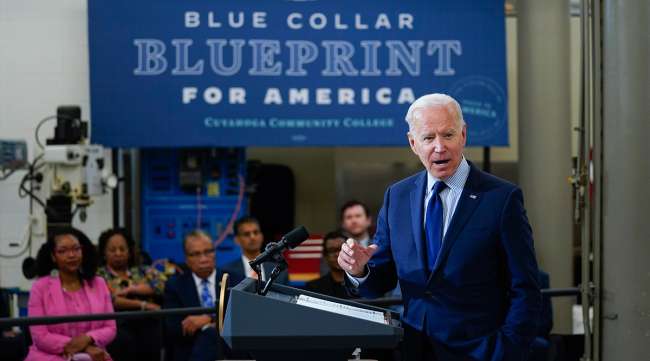Biden $6 Trillion Federal Budget Fueled by Higher Taxes

[Stay on top of transportation news: Get TTNews in your inbox.]
President Joe Biden issued his first full budget proposal May 28, detailing his ambitions to dramatically expand the size and scope of the federal government with more than $6 trillion in spending over the coming fiscal year.
Vast new spending would be paired with significant tax increases on corporations and the wealthy. But Congress controls the government’s purse strings, and with Republicans almost uniformly opposed to most of Biden’s spending and all of his tax increases, he and allied Democrats face difficulty enacting any of it into law.
In more than 1,700 pages, the budget illustrates Biden’s uncompromising vision to restore the nation’s infrastructure, expand the social safety net and combat income inequality with some of the highest levels of federal spending of the postwar era. The document pulls together for the first time a series of proposals unveiled over the opening months of Biden’s presidency, arguing that dramatic investments are needed to bolster a nation decimated by the coronavirus pandemic.
“It is a budget that reflects the fact that trickle-down economics has never worked, and that the best way to grow our economy is not from the top down, but from the bottom up and the middle out,” Biden says in a presidential message included in the document.
The budget employs some methodology that Biden’s political opponents would consider gimmicks. Like his predecessors, the president uses convenient but politically unlikely assumptions about changes to the tax code to reduce projected deficits while simultaneously projecting modest inflation and a broad rebound in U.S. employment.
The White House omitted some of the president’s trickier — and costlier — political ambitions, such as offering a government-run plan for Americans buying health care coverage. And even accounting for his least likely assumptions, Biden’s budget never balances, projecting annual deficits above $1.3 trillion for the next 10 years and national debt that hits $39 trillion, or 117% of annual economic output, by 2031.
“I cannot imagine a worse thing for the economy than higher interest rates, higher inflation and higher taxes,” Sen. Kevin Cramer (R-N.D.) said of Biden’s proposal.
The budget proposal also provides greater detail on how Biden’s previously announced jobs and families plans would be implemented, and how the administration envisions new changes to the tax code would work.
Here are some of the key takeaways:
New Emphasis on Fighting Climate Change
Biden seeks to ramp up spending on climate change across federal agencies, part of a governmentwide approach to the issue that represents a dramatic shift from the Trump administration. That includes asking Congress to infuse money into neglected government climate programs as well as initiatives to help counter the threat with clean energy technology, zero-emission vehicles and increased energy efficiency.
For instance, Biden seeks $1.7 billion to help boost the energy efficiency of homes, schools and federal buildings, with some efforts specifically aimed at weatherizing low-income housing. More than $10 billion — an estimated 30% increase over the current fiscal year — would be dedicated to clean energy innovation outside the Defense Department.
The budget seeks at least $7.4 billion to buy electric vehicles for the federal fleet and the charging stations they will need over the next decade, including $2.4 billion for the U.S. Postal Service.
The Postal Service in February said Oshkosh Corp. had won a $6 billion contract for tens of thousands of mail-delivery vans, and initially said only 10% of the fleet would be electric. The award bypassed fledgling electric-vehicle specialist Workhorse Group Inc., and it set off complaints from lawmakers about buying a fleet that uses polluting technology.
Retroactive Capital Gains Tax Hike
On the tax front, the biggest surprise in Biden’s proposal is that he assumes an increase in the capital gains rate would be retroactive to April 2021. This would prevent wealthy people from quickly selling off their assets before the end of the year to avoid the hike. Most of the other increases, if approved by Congress, would start Jan. 1, 2022, according a senior administration official.
Biden’s budget proposes to roll back most of the Trump cuts on the corporate and international side of the tax code, including bringing the corporate rate back to 28% and the top individual rate back to 39.6%.
The proposal allows many temporary Trump tax cuts for individuals and families to simply expire, as they’re already slated to do after the year 2025. But doing so amounts to something of a budgetary gimmick, as it allows Biden to bank the savings from higher tax rates snapping back in place on families making less than $400,000 per year — something he’s vowed not to let happen.
— With assistance from Josh Wingrove, Nancy Cook, Erik Wasson, John Tozzi, Jack Fitzpatrick, Todd Shields, Jennifer Epstein, Jennifer A. Dlouhy and David Wainer.
Want more news? Listen to today's daily briefing below or go here for more info:




